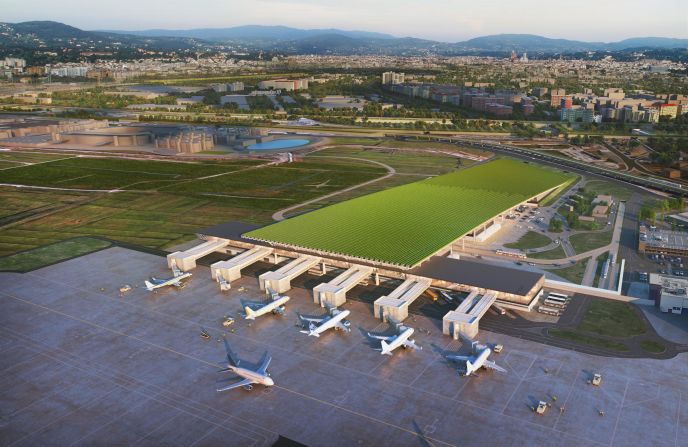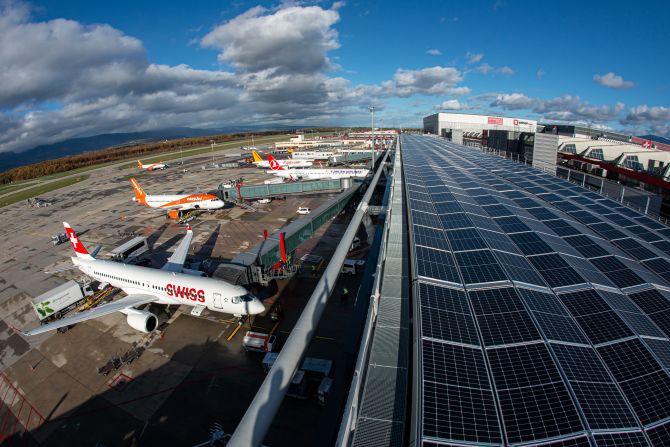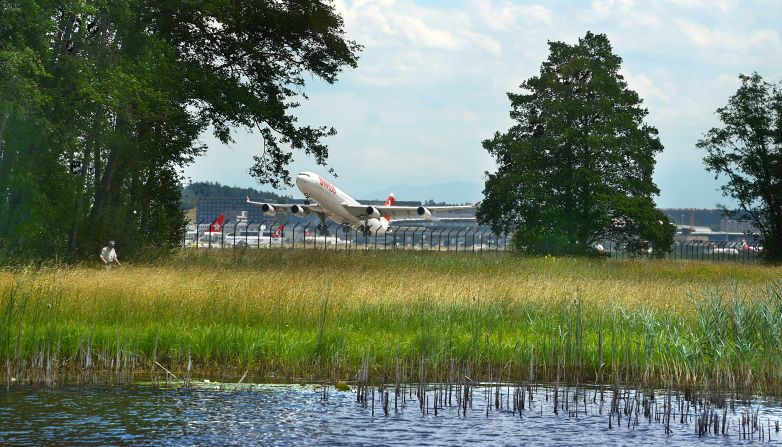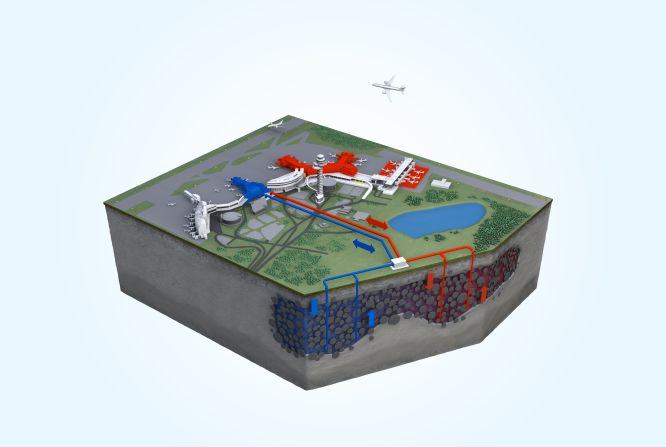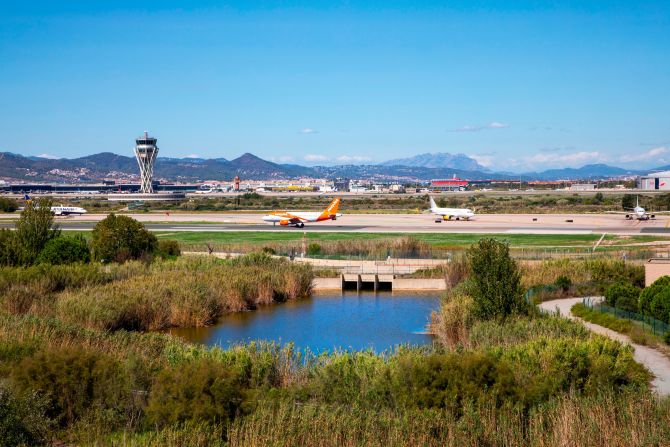Editor’s Note: Call to Earth is a CNN editorial series committed to reporting on the environmental challenges facing our planet, together with the solutions. Rolex’s Perpetual Planet initiative has partnered with CNN to drive awareness and education around key sustainability issues and to inspire positive action.
From the “Walkie Talkie” skyscraper in London, to the Carrasco International Airport in Uruguay, New York-based firm Rafael Viñoly Architects’ portfolio consists of hundreds of projects spanning five continents. The latest addition, announced in January, will be a new international terminal at the Aeroporto Amerigo Vespucci in Florence, the capital of the Italian region of Tuscany.
The structure will serve “as a new landmark for the city’s sustainable future,” according to the firm, and as an homage to the region’s wine-producing heritage, it will have a vineyard on the roof.
“The concept of the building is to recreate the most quintessential Tuscan landscape, which is the vineyard — and then to peel one end of the vineyard up from the floor to create a slope, and slide an airport underneath that slope,” says Román Viñoly, director of Rafael Viñoly Architects.
Set to be completed in two phases, anticipated for 2026 and 2035, Viñoly says sustainability is at the heart of the new structure, calling it a “moral responsibility of anybody building anything.”
The construction sector and the built environment are responsible for 40% of global energy-related carbon emissions. Meanwhile about 2.5% of all emissions is produced by commercial aviation. Efforts to reduce this impact have often focused on innovations in plane fuel, including fuel made from cooking oil, and even sewage, but this new project turns the attention to the operation and construction of the airport itself.
Vines and solar panels
The design’s main attraction, a 19-acre vineyard, acts as a sloping green roof, which research shows can have environmental benefits, such as helping to insulate the building. Along with the sloped design, the roof will have other features engineered for energy efficiency.
“The roof doesn’t start right at the bottom where it meets the floor,” says Viñoly. “The first third of the length of the building is a berm [mound] made of soil and earth.”
He explains that heat exchanger coils will be used to move heat from the berm into the building and vice versa, depending on the season.
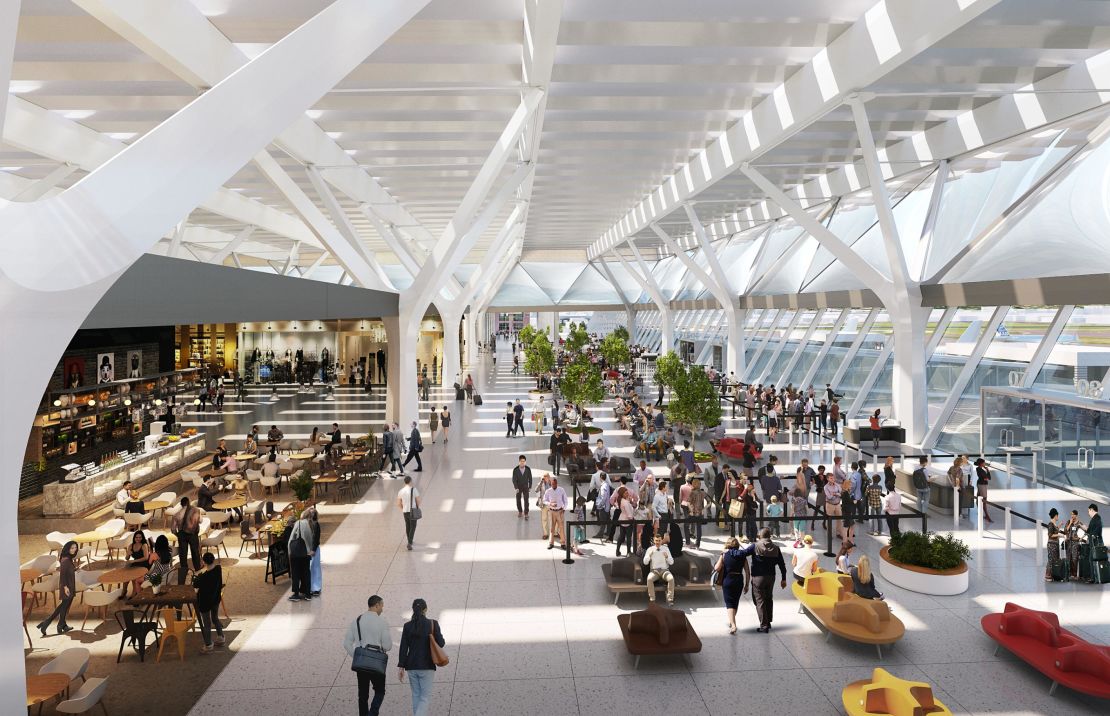
“In the summer, when you need to cool the interior of the space, you do heat exchange into that mass of earth,” he says. “It holds that temperature very effectively for a very long time such that when winter comes and you need to warm the interior, you can do heat exchange again and pull the heat out of that soil and put it into the terminal.”
Woven through the structure, including between the vine rows, will sit a combination of solar panels and translucent photovoltaic panels, which Viñoly says are important to reduce energy usage throughout the day, and create a “visual contact” between passengers inside the building and the vineyard.
When passengers look up, however, they will not be able to see any fruit. According to Viñoly, due to a risk of foreign object damage to aircraft engines, the roof will be primarily covered with non-fruit-bearing rootstock vineyards. Instead, the fruit will be grown and cultivated on the soil bed of the berm — a decision that wasn’t taken lightly.
“We’ve done a fair amount of research and consultation with winemakers and agricultural engineers,” says Viñoly. “The building is close to 500 meters away from where the nearest airplane is. So, because of the physical separation, we are confident that the potential pollutants that might be around the aircraft are far enough away that they won’t have an impact on the quality of the wine produced.”
As for where the wine from the vineyard will be crafted — and by who — it remains to be seen. According to Viñoly, there are provisions in the design to produce a winery under the roof, though this is not confirmed. Meanwhile, the winemaker is yet to be chosen by the airport.
A green challenge for aviation
The project will be cutting edge in its sustainable features, believes Filippo Weber, a member of the non-profit Italian Climate Network, and founder of Italian sustainable architecture firm Weber Architects, who is unrelated to the project. But he questions whether too much emphasis has been placed on the look of the vineyard, rather than its sustainable benefits.
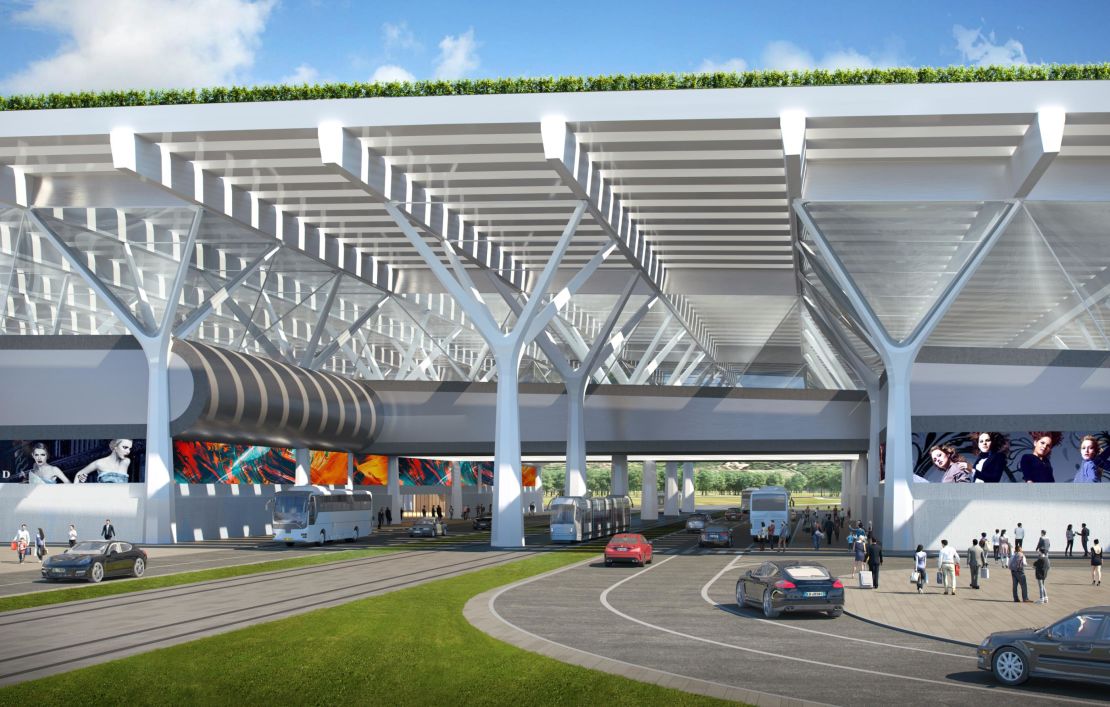
Apart from the vineyard’s possible high demand for water, Weber says, “vines are not green all year round, and this reduces their potential for carbon offsetting the embodied energy and energy consumption of the building.”
In terms of the photovoltaic panels, Weber adds that those placed between the vine rows might be not sufficient in terms of surface area, and that there is a risk they will be overshadowed by the vines themselves.
While Weber calls the use of a berm as a heat exchanger an “interesting strategy,” he says there is not enough information to evaluate its effectiveness, and that “doubts could be raised that such a shallow layer of soil will be able to store enough energy to exchange heat with such an energy-consuming building.”
Ultimately, greener airports will not make a sizable impact on reducing aviation emissions. The more important, and urgent need is to reduce emissions from airlines themselves. And while airlines across the globe have pledged to hit net-zero on greenhouse gases by 2050, the industry is not yet on track to reach this target.
However, Viñoly hopes the project will encourage airports around the world to take sustainability more seriously, and to recognize “that [airports] are not simply transitional places, but they are also destinations in and of themselves.”
